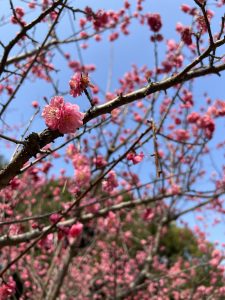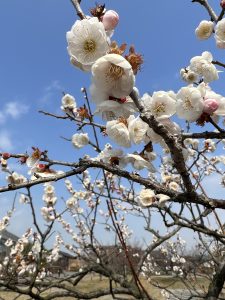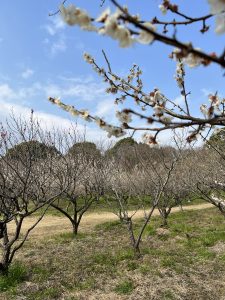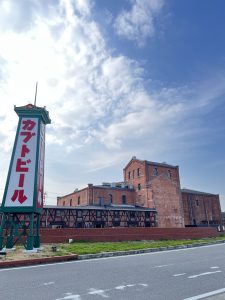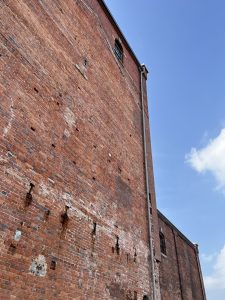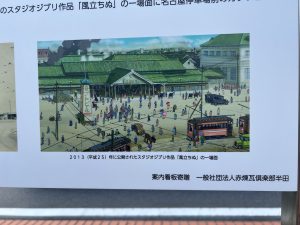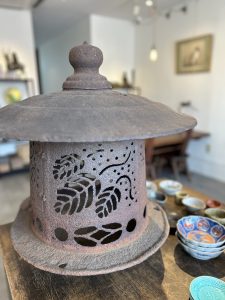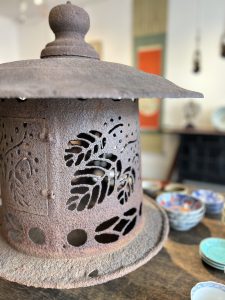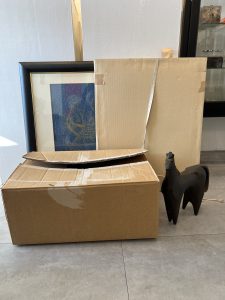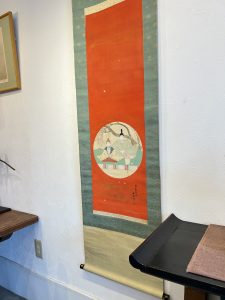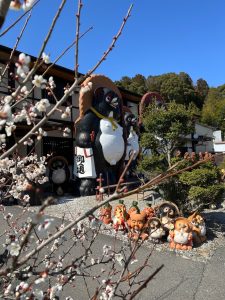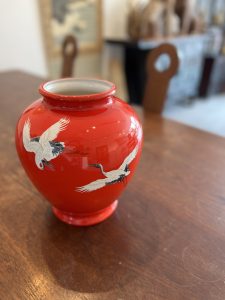元気がもらえるお花です(愛知県名古屋市千種区姫池通 骨董品買取 古美術風光舎)
2024.03.08
みなさまこんにちは、スタッフTでございます。
暖かな日中の陽気と朝晩の冷え込みに、すっかり体調を崩してしまいました。みなさまもご注意くださいね。

さて、本日3月8日は「国際女性デー」。「ミモザの日」でもあります。SNSの中でも黄色いミモザの花が溢れ、お花屋さんの店頭でも黄色いミモザが多く見られ、癒されます。
この「国際女性デー」は、1904年にアメリカ合衆国のニューヨークで、参政権のなかった女性が労働条件改善を求めて起こしたデモがはじまりとされ、 1910年の国際社会主義者会議で「女性の政治的自由と平等のためにたたかう」記念の日と提唱したことから始まりました。 1975年には国連によって「国際女性デー(International Women’s Day)」として制定され、日本でも「女性の生き方を考える日」として、さまざまな活動が行われているものです。
また、イタリアでは3月8日を「FESTA DELLA DONNA(フェスタデラドンナ)=女性の日」とし、 男性から普段お世話になっている女性に旬のミモザをプレゼントする風習があり、3月8日は「ミモザの日」とも呼ばれるようになりました。
「国際女性デー」に類する女性のための日は世界各国にありますが、贈られる花がミモザと決まっているのはイタリアだけ。これは、大戦後初めて迎える1946年の女性の日にイタリアの女性連合によって提唱されました。
最初はすみれの花が候補に挙げられていましたが、高価なすみれに対し、ミモザはイタリアに自生する身近な花で、これならば貧富の差に関係なく誰でも身近な女性に感謝の意を表すことができる、とミモザに決まったのだそう。
ミモザと聞いて思い浮かぶのが、鮮やかな黄色い花。ポンポンのような小さく丸い花が集まって咲くのが特徴ですね。成長が早く、5メートルを超える木に育ち、花の時期には木の枝全体が黄色い雲やわた菓子のようにふんわりと見えます。花はドライにしてもきれいな黄色が残るので、リースやスワッグ、ドライフラワーなどインテリアにも人気です。
3月~4月頃まで花を楽しませてくれる黄色くてふわふわした印象のかわいらしい花のミモザ。鼻を近づけると分かるような、ふんわりと甘い優しい香りが楽しめます。
花ばかりに目が行きがちですが、実は葉も特徴的です。
ミモザの正式名称は、銀葉(ぎんよう)アカシアといいます。正確にはミモザという品種の植物はなく、アカシアの仲間の総称のことをいいます。アカシアの木は、マメ科アカシア属に分類されるオーストラリア原産の常緑高木です。
元々ミモザは、オジギソウの学名であり通称。アカシアの葉がオジギソウに似ていたことから、アカシアがヨーロッパへ持ち込まれた際に「ミモザアカシア」と呼ぶようになり、そこから「ミモザ」という呼称が定着したといわれています。
この銀葉アカシアという名前にもあるように、ミモザの葉はシルバーリーフと呼ばれ、すこし銀色のような色をしています。お花屋さんでミモザ(銀葉アカシア)を見かけたときは、葉にも注目してみてください。
最近はお花屋さんに限らず、ミモザの花をよく見るようになってきた気がします。
花束やアレンジメントなどの切り花(枝物)で見るほかに、ミモザを使ったレジンアクセサリーや、リース、スワッグなどを黄色のミモザを使った小物たちを見ると、春が来たなと実感します。
明るい黄色が鮮やかに春を告げる、ミモザ。小さなポンポンが集まったように咲く姿が可愛らしく、元気をくれる花です。
そんなミモザの代表的な花言葉は「優雅」「友情」「感謝」という意味があります。
見た目がとても可愛く、花言葉の意味もポジティブなものばかりなので贈り物に向いていますが、花の色によって花言葉の意味が違ってきます。
ミモザに限りませんが、花言葉の意味を知らずに贈ってしまうと、意図していない意味にとられてしまう可能性もあるので、注意が必要ですね。
見た目から元気がもらえるミモザですが、花粉症の私には、実はあのふわふわした生花は油断ならないので、毎年ドライフラワーを飾ることしかできなのがとても残念なのですが・・・。
ではでは、また。

Hello everyone, this is Staff T.
The warm daytime weather and the cool morning and evening temperatures have made me completely ill. I hope you are all taking care of yourselves.
Today, March 8, is International Women’s Day. Yellow mimosa flowers are all over social networking sites, and many yellow mimosa flowers can be seen in flower stores, which is very soothing.
International Women’s Day was first celebrated in 1904 in New York City, U.S.A., when women who did not have the right to vote held a demonstration to demand better working conditions. In 1975, it was established as “International Women’s Day” by the United Nations, and various activities are being conducted in Japan as “a day to think about women’s way of life.
In Italy, March 8 is “Festa della Donna” (Women’s Day), and there is a custom for men to present mimosas, which are in season, to women whom they have taken care of in their daily lives.
Although there are other women’s days similar to International Women’s Day in many countries around the world, only in Italy are mimosas the designated flower to be given as a gift. This was proposed by the Italian Women’s Union on the first Women’s Day after World War II in 1946.
At first, violets were considered as a candidate, but the mimosa was chosen because it is a familiar flower that grows wild in Italy, whereas violets are expensive, and anyone, rich or poor, can express their gratitude to a woman close to them.
When one hears the word mimosa, bright yellow flowers come to mind. It is characterized by its clusters of small, round flowers that look like pompons. The tree grows quickly, reaching over 5 meters in height, and during the flowering season, the entire branch of the tree looks soft and fluffy like a yellow cloud or cotton candy. The flowers remain a beautiful yellow color even when dried, making them popular for interior decorations such as wreaths, swags, and dried flowers.
The mimosa is a pretty yellow flower with a fluffy appearance that can be enjoyed from March to April. You can enjoy its soft, fluffy, sweet, gentle fragrance that you can smell when you put your nose close to it.
Although people tend to focus only on the flowers, the leaves are actually distinctive as well.
The official name of the mimosa is the acacia (Acacia chinensis), which means “silver-leafed acacia. To be precise, there is no variety of mimosa plant, but rather a generic name for a member of the acacia family. The acacia tree is a tall evergreen tree native to Australia, classified in the genus Acacia of the Fabaceae family.
Originally, mimosa was the scientific and common name for the osmanthus. Because the leaves of the acacia resembled those of the tussock, when the acacia was brought to Europe, it came to be called “mimosa acacia,” from which the name “mimosa” is said to have taken root.
As the name “silverleaf acacia” suggests, the leaves of the mimosa are called “silverleaf” and have a slightly silvery color. When you see mimosa (silverleaf acacia) at a flower shop, pay attention to the leaves.
I feel that mimosa flowers are becoming more common these days, not only in florists’ shops.
In addition to cut flowers (branches) such as bouquets and arrangements, resin accessories, wreaths, swags, and other accessories using yellow mimosa make me realize that spring has arrived
Mimosa, with its bright yellow color, heralds the arrival of spring. It is a flower that cheers us up with its lovely appearance of blooming like a cluster of small pompons.
The typical words of the mimosa in the language of flowers are “grace,” “friendship,” and “gratitude.
It is suitable as a gift because it looks very pretty and the meaning of the language of flowers is all positive, but the meaning of the language of flowers differs depending on the color of the flower.
It is not limited to mimosa, but if you give a gift without knowing the meaning of the language of flowers, it may be taken to mean something you did not intend.
Mimosas are cheerful from the outside, but as a hay fever sufferer, I can’t be too careful with those fluffy fresh flowers, so I can only decorate with dried flowers every year.
See you soon.
*******************
ご実家の整理やお片付けなどをされている方のご相談などが多くございます。
お片付けなどくれぐれもご無理のないようになさってくださいませ。
風光舎では古美術品や骨董品の他にも絵画や宝石、趣味のお品など様々なジャンルのものを買取しております。
お片付けをされていて、こういうものでもいいのかしらと迷われているものでも、どうぞお気軽にご相談下さいませ。
また風光舎は、出張買取も強化しております。ご近所はもちろん、愛知県内、岐阜県、三重県その他の県へも出張いたします。
まずは、お電話お待ちしております。
愛知県名古屋市千種区姫池通
骨董 買取【古美術 風光舎 名古屋店】
TEL052(734)8444
10:00-18:00 OPEN
#骨董買取#古美術買取#出張買取#無料査定#生前整理#遺品整理#家じまい#実家じまい#掛け軸#絵画#木箱入り茶碗#刀剣#洋食器#貴金属

